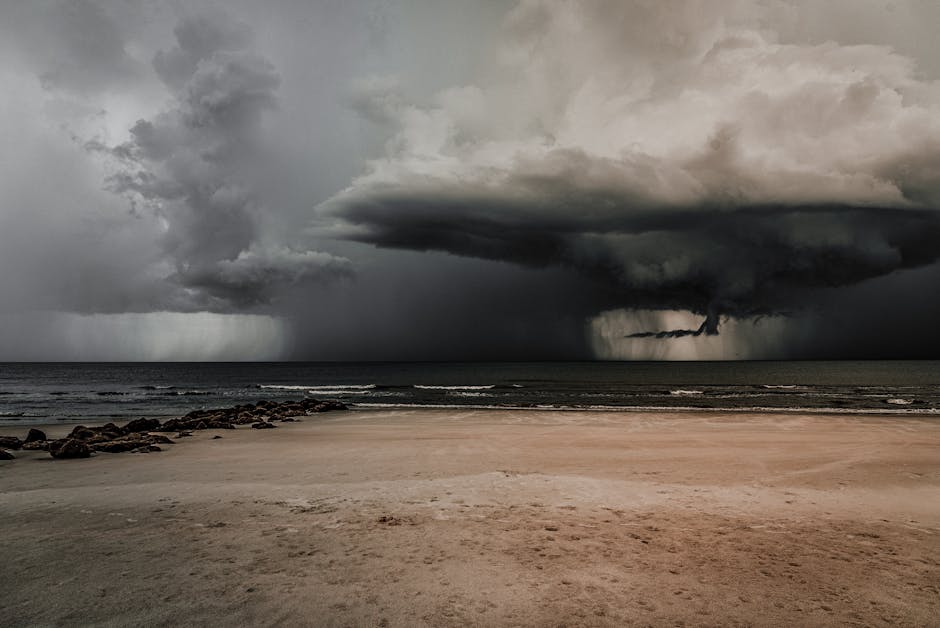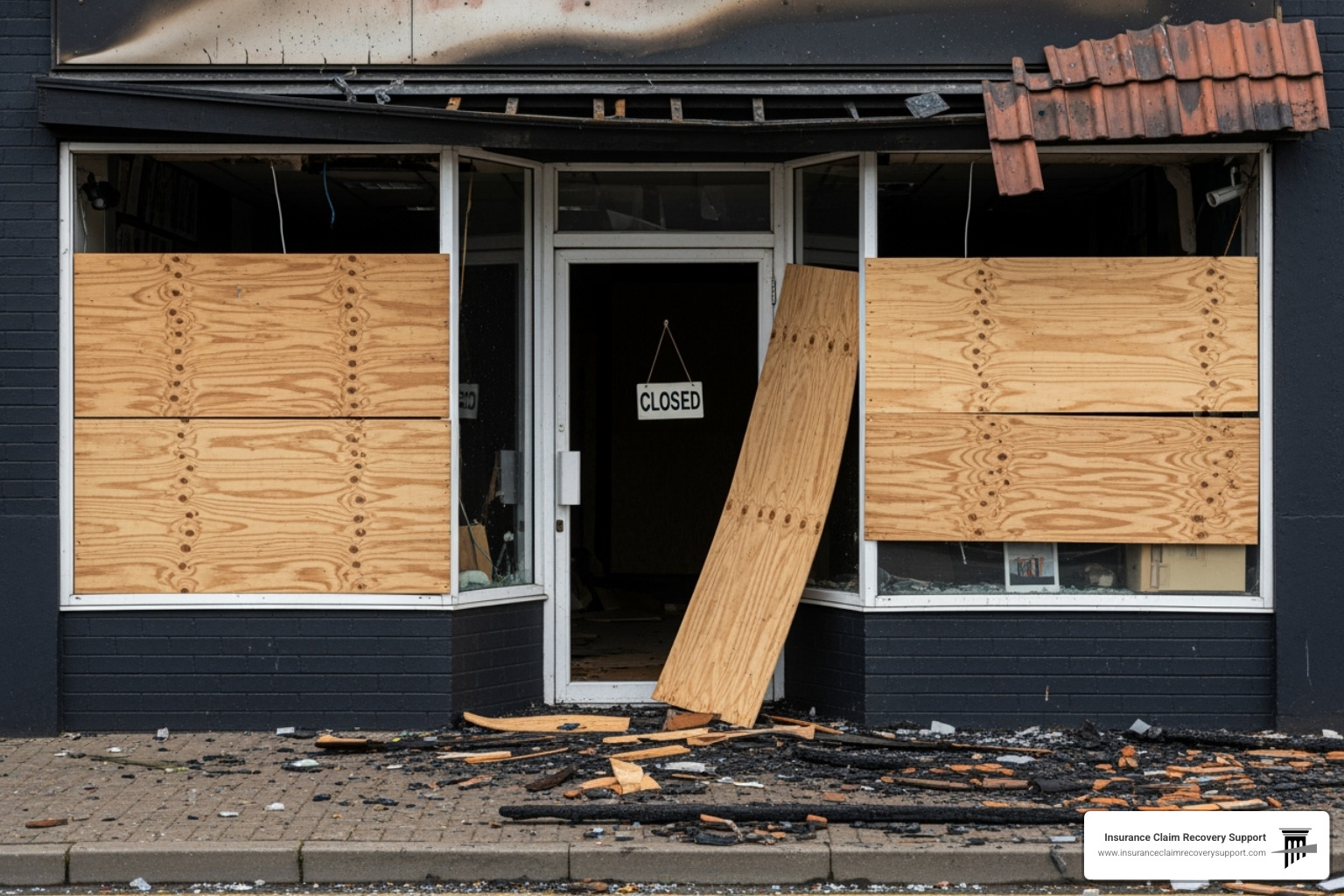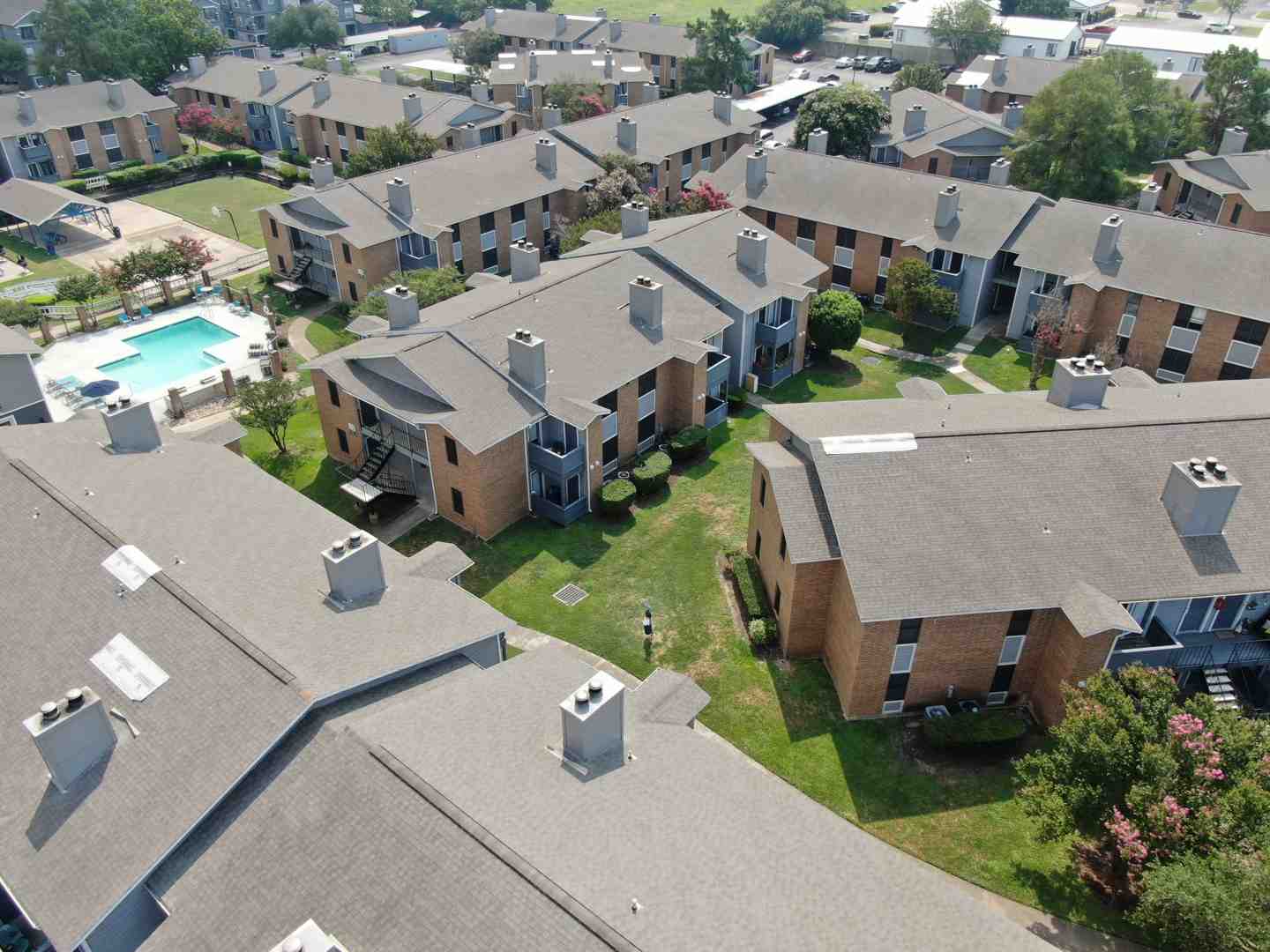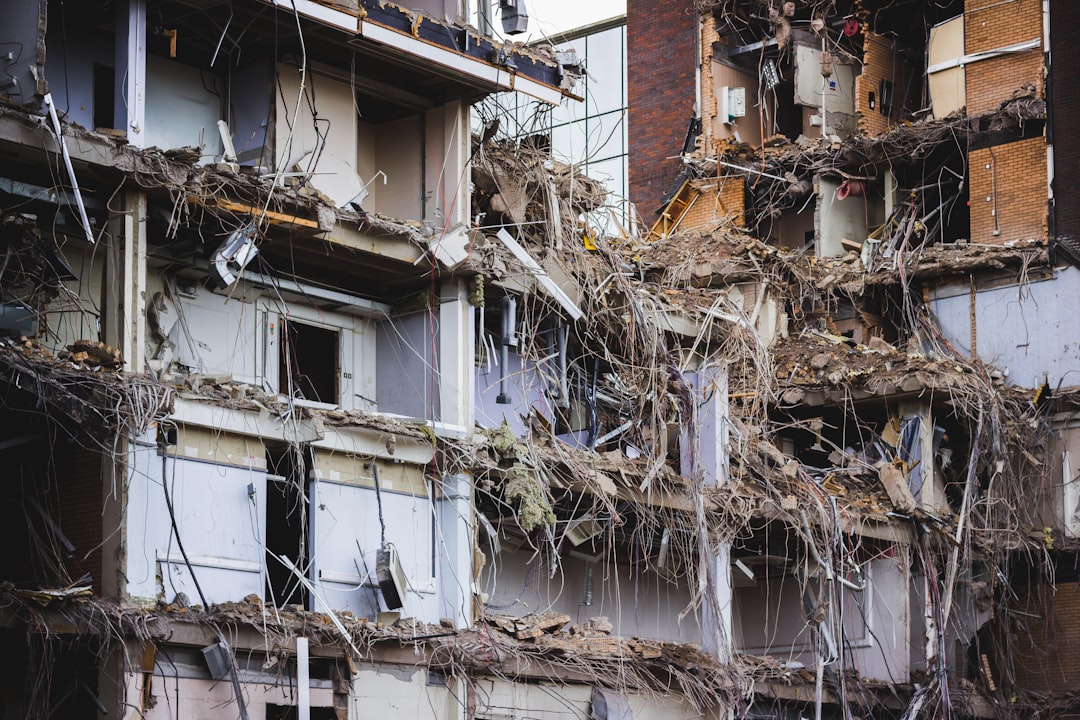Introduction
The Atlantic hurricane season is a significant period when tropical and subtropical cyclones are most likely to form in the North Atlantic Ocean. Spanning from June 1 through November 30, it peaks in late August through September. Knowing what to expect and how to prepare is crucial for anyone living in or owning property in hurricane-prone areas.
Quick Facts:
- Season Duration: June 1 – November 30
- Peak Activity: Late August – September
- Average Number of Named Storms: 10.1
- Average Number of Hurricanes: 5.9
- Average Number of Major Hurricanes: 2.5
Understanding the Atlantic hurricane season’s timeline and impact is vital for property owners, especially those with commercial or residential assets along coastal areas. This period sees the clustering of powerful storms that can bring devastating winds, storm surges, and flooding.
Historically, this season has shaped strategies for naval operations, insurance policies, and infrastructure planning. Today’s technology may provide advanced warnings, but the necessity of preparedness remains as vital as ever.
In this guide, we will explore the Atlantic hurricane season’s history, current predictions, and practical tips to protect your property and ensure a swift recovery.

Understanding the Atlantic Hurricane Season
The Atlantic hurricane season runs from June 1 to November 30 each year. This period is when tropical or subtropical cyclones are most likely to form in the North Atlantic Ocean. These dates are based on historical data showing when most storm activity occurs.
Climatology
The peak of the Atlantic hurricane season happens from late August through September, with the highest activity around September 10. This peak aligns with the time when the difference between air temperature and sea surface temperatures is the greatest. Warmer sea surface temperatures provide the energy needed for hurricanes to form and intensify.
Formation Regions
Hurricanes typically form in warm ocean waters. For the Atlantic, this means regions like the Gulf of Mexico, the Caribbean Sea, and the tropical North Atlantic. Here’s a quick breakdown:
- Gulf of Mexico: Warm waters here often fuel storms that impact the U.S. Gulf Coast.
- Caribbean Sea: Hurricanes forming here can affect the Caribbean islands and the southeastern U.S.
- Tropical North Atlantic: This region, especially near the coast of Africa, is a common breeding ground for tropical waves that can develop into hurricanes.
Historical Context
In the 19th century, American meteorologist William Charles Redfield defined the hurricane season as lasting from July 15 to October 15. This period was chosen because it was when insurance premiums often increased due to the higher risk of hurricanes.
Key Statistics
- Average Named Storms Per Season: 10.1
- Average Hurricanes Per Season: 5.9
- Average Major Hurricanes (Category 3 or higher): 2.5
The most active season on record was 2020, with 30 named storms. The least active was 1914, with only one known tropical cyclone.
Understanding these patterns and historical data helps in predicting and preparing for future storms.
Next, we will delve into predictions for the 2023 Atlantic hurricane season, including pre-season forecasts and the potential impact of El Nino.
Predictions for 2023
Pre-season Forecasts
The 2023 Atlantic hurricane season has garnered considerable attention due to varying predictions from different research groups. The University of Pennsylvania forecasted between 12 to 20 named storms. Meanwhile, the Servicio Meteorológico Nacional anticipated 10 to 16 named storms. The UK Met Office initially called for 20 named storms, 11 hurricanes, and 5 major hurricanes.
Interestingly, the forecasts had a wide range of conclusions. For example, Colorado State University predicted a near-average season with 13 named storms, 6 hurricanes, and 2 major hurricanes. On the other end, the University of Arizona expected a very active season with 19 named storms, 9 hurricanes, and 5 major hurricanes.
NOAA Predictions
The National Oceanic and Atmospheric Administration (NOAA) predicted a near-normal hurricane season for 2023. They forecasted 12 to 17 named storms, 5 to 9 hurricanes, and 1 to 4 major hurricanes. NOAA also mentioned a 40% chance of a near-normal season, a 30% chance of an above-normal season, and a 30% chance of a below-normal season.
El Nino Impact
One major factor influencing the 2023 Atlantic hurricane season is the El Nino phenomenon. El Nino typically increases wind shear, which can inhibit hurricane formation. However, this year, the record-warm sea surface temperatures in the Atlantic could counteract the effects of El Nino.
NOAA’s updated prediction in August 2023 raised the stakes, calling for 14 to 21 tropical storms, 6 to 11 hurricanes, and 2 to 5 major hurricanes. This adjustment was due to the warm phase of the Atlantic multidecadal oscillation and the developing El Nino.
Mid-season Forecasts
As the season progressed, forecasts were adjusted. By June 16, the University of Arizona updated its prediction to an even more active season with 25 named storms, 12 hurricanes, and 6 major hurricanes. The UK Met Office also updated their forecast on August 1, slightly decreasing the number of tropical storms and hurricanes but increasing the number of major hurricanes to 6.
Understanding these predictions helps us prepare better for the potential impact of the 2023 hurricane season. Next, we will explore the historical impact of hurricanes on Texas and Florida, highlighting the vulnerabilities of these coastal areas.
Historical Impact on Texas
Florida Hurricanes
Florida is often hit hard during the Atlantic hurricane season. The state’s long coastline and warm waters make it a prime target for powerful storms. For instance, Hurricane Charley in 2004 brought hurricane-force winds to Orlando, nearly 100 miles from its landfall point. The storm moved rapidly through Florida, causing widespread damage to homes, trees, and power lines.
Another notable hurricane, Hurricane Jeanne in 1980, set the state record for 24-hour rainfall with 23.38 inches. This immense rainfall led to severe flooding, demonstrating how even the remnants of hurricanes can cause significant damage.
Texas Storms
Texas has also faced its share of devastating hurricanes. Hurricane Harvey in 2017 stands out as one of the most destructive. Making landfall as a Category 4 hurricane, Harvey caused catastrophic flooding, especially in the Houston area. The storm inflicted approximately $125 billion in damage, making it one of the costliest natural disasters in U.S. history. The flooding damaged hundreds of thousands of homes and displaced thousands of residents.
Another significant storm was Hurricane Ike in 2008. Ike brought fierce winds and towering storm surges, particularly impacting coastal regions. Over 100 lives were lost, and the damage toll reached into the billions. This event underscored the necessity for stringent building codes and thorough insurance protection.
Coastal Vulnerability
Both Florida and Texas have extensive coastlines, making them highly vulnerable to hurricanes. The flat terrain in Florida means that strong winds do not rapidly weaken after landfall, causing extensive inland damage. In Texas, the Gulf Coast is particularly susceptible to storm surge and flooding.
Storm surge can push a wall of water up to 25 feet high onto the shore, combining with local tides to create devastating floods. For example, during Hurricane Laura in 2020, wind speeds reached up to 150 mph, causing extensive damage to buildings and infrastructure along the Texas-Louisiana border.
Flooding is another major concern. Slow-moving storms, like Hurricane Easy in 1950, can dump enormous amounts of rain. Easy dropped an estimated 38.70 inches of rain on Yankeetown, Florida, in just 24 hours.
Understanding these historical impacts helps underscore the importance of preparation and effective insurance coverage. Next, we will discuss how to prepare for a hurricane, including evacuation plans and safety tips.
Preparing for a Hurricane
Evacuation Plans
Having a solid evacuation plan is crucial during the Atlantic hurricane season. Here’s how to ensure your family is ready:
- Identify Evacuation Zones: Check if your home is in a storm surge evacuation zone. You can find your zone here.
- Plan Multiple Routes: Identify several evacuation routes in case some roads are blocked or flooded.
- Know Shelter Locations: Locate nearby shelters and plan where you will stay.
- Communication Plan: Make sure everyone in your family knows how to contact each other if separated.
- Practice Drills: Regularly practice your evacuation plan to make the actual event smoother and less stressful.
Safety Tips
Staying safe during a hurricane involves more than just knowing when to leave. Here are some essential safety tips:
- Stay Informed: Keep a NOAA Weather Radio handy to receive emergency alerts.
- Secure Your Home: Reinforce roofs, windows, and doors. Install storm shutters or board up windows.
- Turn Off Utilities: Shut off gas, water, and electricity if instructed by local authorities.
- Avoid Flood Waters: Never walk or drive through flooded areas. Just six inches of moving water can knock you down.
- Stay Indoors: If you’re not evacuating, stay inside and away from windows and glass doors.
Emergency Kits
A well-prepared emergency kit can be a lifesaver. Here’s what you should include:
- Water and Food: At least a three-day supply of water and non-perishable food per person.
- NOAA Weather Radio: With battery backup to stay updated on weather conditions.
- First-Aid Kit: Include essential medicines and supplies.
- Flashlights and Batteries: Power outages are common during hurricanes.
- Important Documents: Keep copies of important documents in a waterproof container.
- Personal Hygiene Items: Soap, hand sanitizer, and sanitary products.
- Extra Clothing and Blankets: To stay warm and dry.
- Tools and Supplies: Basic tools, duct tape, and a whistle to signal for help.
- Pet Supplies: Food, water, and medications for your pets.
By following these preparation strategies, you can enhance your readiness for hurricanes and safeguard your property and loved ones.
Next, we’ll address some frequently asked questions about hurricanes in Florida, including current storm status and predictions for the future.
Insurance and Recovery
Insurance Claim Recovery Support
When hurricanes strike, the damage can be overwhelming. From shattered windows to flooded homes, the destruction requires immediate attention and a clear plan for recovery. At Insurance Claim Recovery Support, we specialize in helping policyholders navigate the complex world of insurance claims, ensuring you get the support and compensation you deserve.
Property Damage
Hurricanes can cause extensive property damage. Wind speeds in excess of 74 mph can tear roofs off buildings, while storm surges can flood entire neighborhoods. The 2023 Atlantic hurricane season is predicted to have 12 to 17 named storms, with 5 to 9 potentially becoming hurricanes. This highlights the importance of being prepared and knowing what to do if your property is damaged.
Insurance Claims Process
Filing an insurance claim after a hurricane can be daunting. The process involves assessing the damage, documenting everything, and negotiating with your insurance company. Our experts at Insurance Claim Recovery Support are here to guide you through each step. We ensure that every aspect of your claim is handled professionally, so you can focus on rebuilding your life.
Advocacy for Policyholders
We are committed to advocating for your rights as a policyholder. After a hurricane, insurance companies may try to minimize payouts. Our team fights to ensure you receive the maximum settlement possible. We understand the stress and confusion that can follow a disaster, and we work tirelessly to make the claims process as smooth as possible for you.
Advocating for Maximum Settlements
Our mission is to secure the highest possible compensation for your losses. We meticulously document the damage, including structural impacts, water damage, and any other losses. With our expertise, we negotiate with insurance companies to cover all eligible damages, ensuring you get the settlement you deserve.
Property Damage Claims Expertise
With years of experience in handling property damage claims, we have developed a deep understanding of the insurance landscape. From hurricanes like Charley in 2004, which brought hurricane-force winds to Orlando, to more recent storms, we have helped countless homeowners and businesses recover. Our tailored strategies meet the unique challenges of each case, providing comprehensive support to all our clients.

By partnering with Insurance Claim Recovery Support, you ensure that you have knowledgeable and committed advocates on your side. We help you navigate the aftermath of a hurricane, transforming the complex claims process into a manageable journey towards recovery.
Next, we’ll address some frequently asked questions about hurricanes, including current storm status and predictions for the future.
Frequently Asked Questions about the Atlantic Hurricane Season
How many hurricanes are predicted for 2023?
For the 2023 Atlantic hurricane season, experts from NOAA predicted a near-normal season. They expected 12 to 17 total named storms. Out of these, 5 to 9 could become hurricanes, and 1 to 4 might reach major hurricane strength (Category 3 or higher). Despite the presence of an El Niño event, which usually reduces hurricane activity, the season turned out to be the fourth-most active on record with 20 named storms, including 7 hurricanes and 3 major hurricanes.
Where do most Atlantic hurricanes hit?
Most Atlantic hurricanes hit the following regions:
- The Gulf Coast: States like Texas, Louisiana, Mississippi, Alabama, and the west coast of Florida often face hurricanes.
- The East Coast: The eastern seaboard, from Florida up to New England, is also frequently impacted.
- The Caribbean: Islands such as Puerto Rico, the Bahamas, and the Lesser Antilles are common targets.
- Central America: Countries like Nicaragua and Honduras often experience landfalls.
In 2023, storms like Hurricane Idalia and Tropical Storm Harold made landfall in Florida and Texas, respectively. Hurricane Lee also made its way to Atlantic Canada as a strong extratropical cyclone.
What is the average hurricane season in the Atlantic?
The Atlantic hurricane season officially runs from June 1 to November 30. These dates cover the period when most tropical cyclogenesis occurs. However, storms can form outside this window. For example, in 2023, a subtropical storm formed on January 16, marking the earliest start since Hurricane Alex in 2016.
On average, a typical Atlantic hurricane season includes:
- 14 named storms
- 7 hurricanes
- 3 major hurricanes
The 2023 season surpassed these averages, largely due to record-warm sea surface temperatures across the Atlantic, which fueled more storm activity despite the El Niño event.
Conclusion
Safety
Safety is our top priority during the Atlantic hurricane season. Hurricanes can cause severe damage, so it’s crucial to stay informed and prepared. NOAA and the National Hurricane Center provide real-time updates and forecasts. Regularly check these sources to stay ahead of any potential threats.
Preparedness
Being prepared can save lives and property. Here are some key steps:
- Create an Emergency Kit: Include water, non-perishable food, a first-aid kit, flashlights, batteries, and important documents in a waterproof container.
- Secure Your Home: Reinforce roofs, windows, and doors. Ensure loose items in your yard are secured.
- Know Your Evacuation Zone: Understand if your area is prone to flooding or storm surges and have multiple evacuation routes planned.
For tailored preparedness plans, visit the Florida Department of Emergency Management’s interactive website.
Recovery Support
After a hurricane, dealing with property damage can be overwhelming. Insurance Claim Recovery Support helps policyholders navigate the complexities of filing and settling insurance claims. Our expertise ensures you receive the compensation you deserve for damages.
We advocate on your behalf, making the recovery process smoother and less stressful. For more information on how we can assist you, visit our hurricane loss types page.
By following these safety and preparedness tips and knowing where to turn for recovery support, you can enhance your readiness for the Atlantic hurricane season. Stay safe and be prepared!







